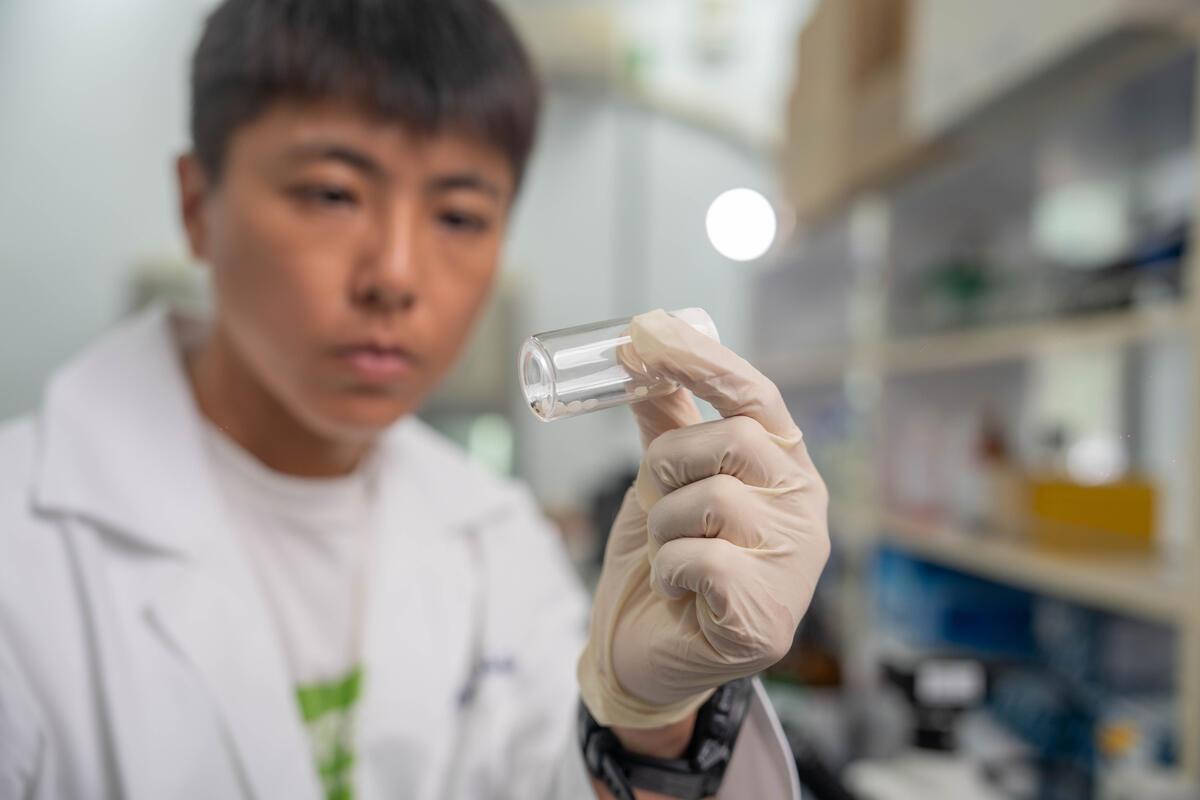Manaus – Greenpeace Brazil has partnered up with health professionals and other organisations[1] to deliver over 28 tonnes of urgently needed medical supplies; including COVID-19 tests, oxygen cylinders, hand sanitisers and personal protection equipment, to remote cities in the Amazon region. The solidarity project, called “Wings of Emergency”, has reached more than 50 Indigenous groups since 8 May.
Currently, Indigenous Peoples’ mortality rate from COVID-19 is 150% higher than the Brazilian average, according to a study from the Coordination of Indigenous Organizations of the Brazilian Amazon (Coiab) and the Amazon Environmental Research Institute (Ipam). By 8 July, there were 12,048 COVID-19 infections within Indigenous communities and 446 deaths registered in 122 different ethnicities.
“Bolsonaro has abandoned Indigenous Peoples to their fate in one of the worst crises in recent history by going as far as even vetoing fundamental parts of a law proposed to offer COVID-19 support to Indigenous communities. Even worse, the government has been using the pandemic as a cover to boost their destructive agenda.” said Carol Marçal, project leader of Wings of Emergency at Greenpeace Brazil.
“Through the Wings of Emergency project, developed together with partners, we were able to provide emergency supplies to Indigenous Peoples, such as the Munduruku and the Yanomami. Very limited access to healthcare and massive illegal invasions on Indigenous lands by miners and loggers are making Indigenous Peoples and traditional communities the most vulnerable during the pandemic and the threat of the extinction of Indigenous communities becomes a possibility.” continued Marçal.
Greenpeace is calling on President Jair Bolsonaro and the Brazilian government to listen to Indigenous organisations and prioritize protecting the people of Brazil during the COVID-19 pandemic, especially the most vulnerable groups, like Indigenous Peoples and traditional communities.
Since early May, the Wings of Emergency project has carried out a total of 28 flights – almost one every two days. Each operation involved the purchase of materials or receiving donations, a rigorous three-step decontamination process[2], planning with partners and the transport or shipment of donations. Greenpeace transported 12,520kg of equipment with the small airplane usually used for overflights to detect deforestation.
The flights covered the regions of Alto Rio Negro, Medio Purus, Alto Solimões (Amazonas), Tapajós (Pará) and to the Tumucumaque Indigenous Park, where the impacts of COVID-19 are especially dangerous because of registered Indigenous Peoples in voluntary isolation. In addition, the coalition used two boats to transport 16,201kg of food, oxygen cylinders, power generators, hand sanitizer and electrical equipment, among other supplies, for Indigenous organisations in 12 municipalities in the Amazonas state, upstream the Rio Negro and Rio Solimões. In São Gabriel da Cachoeira, a city in the Amazon rainforest where 90% of the population is Indigenous, and in the city of Tabatinga, the materials were delivered directly to health government agencies for Indigenous Peoples, enabling them to set up primary care units to treat COVID-19.
Key figures on materials transported by Wings of Emergency:
- 6 tonnes of food
- 7.720 COVID-19 tests
- 135 oxygen concentrators
- 56 oxygen cylinders
- 24,700 fabric masks (produced by Greenpeace activists)
- 10,000 surgical gloves
- 2,000 surgical masks
- 24,648 bottles of hand sanitizer
- 9,850 bars of soap
- 80 Tyvec coveralls
- 80 face shields
- 20 power generators
Personal protection equipment (PPE), medicines, vaccines, thermometers, mattresses, radios, electric equipment, solar panels and a sewing machine were also delivered to benefit Indigenous communities in the Amazon. The project also transported doctors and other health professionals from partner organisations.
“This is an evolving disaster, and it is far from under control as the Brazilian government continues to put the profits of the few who benefit from the exploitation of the country’s resources before the rights and well-being of its people. As the dry season approaches and the fires in the Amazon intensify, the air pollution can create an even greater overload on the health system of the region, making it even more difficult to manage the COVID-19 crisis,” said Marçal.
ENDS
Notes to editors:
[1] Organisations and institutions involved are: Greenpeace, Coordination of Indigenous Organizations of the Brazilian Amazon (Coiab), Federation of Indigenous Organizations of Rio Negro (Foirn), Health Expeditionaries (EDS), Operation Amazon Native (Opan), Instituto Socioambiental (ISA), Institute for Research and Indigenous Training (Iepe), Amazon Watch and some Special Indigenous Sanitary Districts (Dsei)
[2] All transports followed strictest health and safety protocols, which are applied in a 3 step process: 1) decontamination of the plane and the materials to be transported; 2) use of all necessary personal protective equipment; 3) decontamination after arrival and storage in warehouse for at least 72 hours. Additionally and for safety measures, Greenpeace is not entering Indigenous villages, unless it is at the request of Indigenous organisations, with authorisation from government agencies.
Photos and videos available here.
Contacts:
Christine Gebeneter, Global communications lead All Eyes on the Amazon project, Greenpeace CEE Vienna, +43 664 8403807, [email protected]
Karen Mota, press officer, Greenpeace Brazil, +55 11 97252-6867 (during Brazil timezone), [email protected]
Greenpeace International Press Desk, +31 (0)20 718 2470 (available 24 hours), [email protected]



